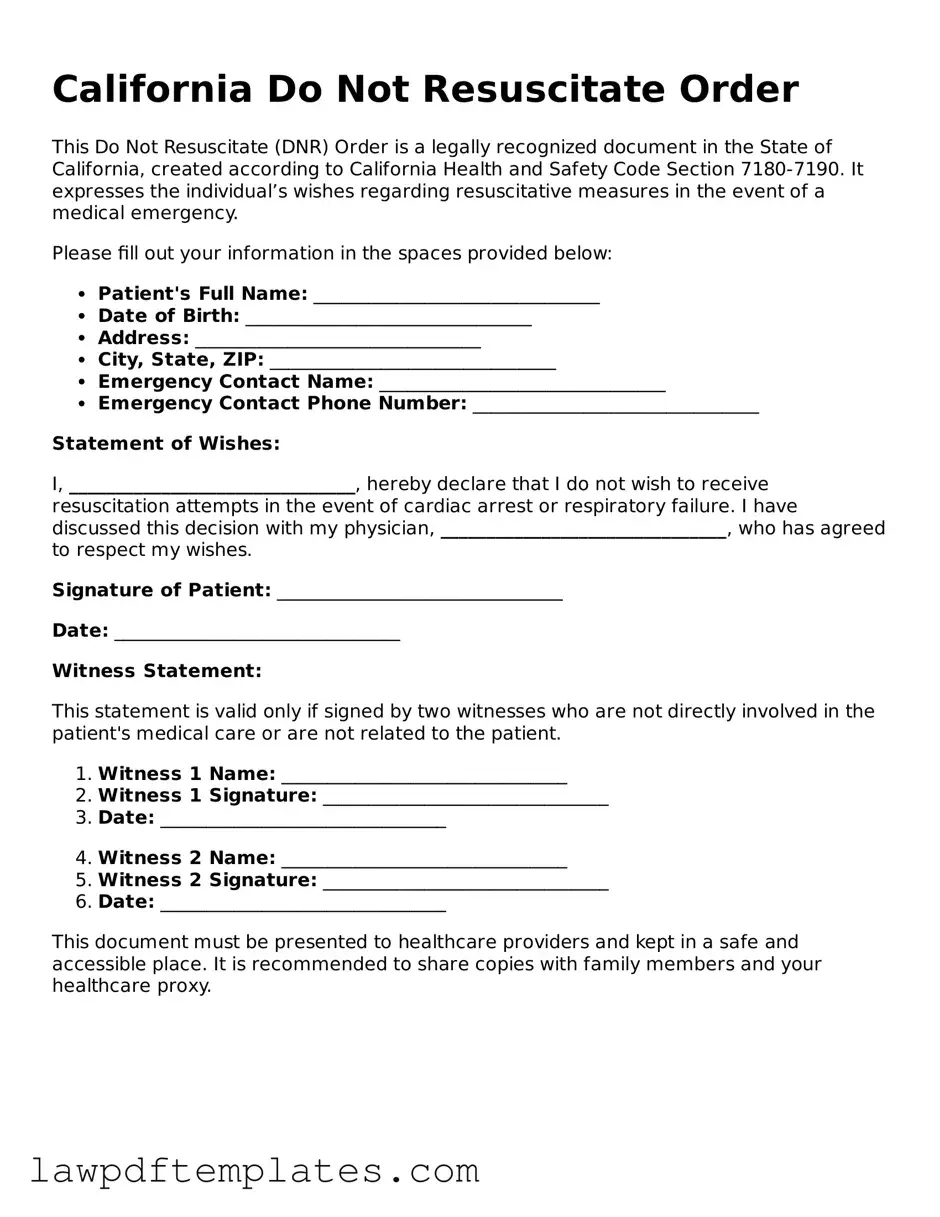California Do Not Resuscitate Order
This Do Not Resuscitate (DNR) Order is a legally recognized document in the State of California, created according to California Health and Safety Code Section 7180-7190. It expresses the individual’s wishes regarding resuscitative measures in the event of a medical emergency.
Please fill out your information in the spaces provided below:
- Patient's Full Name: _______________________________
- Date of Birth: _______________________________
- Address: _______________________________
- City, State, ZIP: _______________________________
- Emergency Contact Name: _______________________________
- Emergency Contact Phone Number: _______________________________
Statement of Wishes:
I, _______________________________, hereby declare that I do not wish to receive resuscitation attempts in the event of cardiac arrest or respiratory failure. I have discussed this decision with my physician, _______________________________, who has agreed to respect my wishes.
Signature of Patient: _______________________________
Date: _______________________________
Witness Statement:
This statement is valid only if signed by two witnesses who are not directly involved in the patient's medical care or are not related to the patient.
- Witness 1 Name: _______________________________
- Witness 1 Signature: _______________________________
- Date: _______________________________
- Witness 2 Name: _______________________________
- Witness 2 Signature: _______________________________
- Date: _______________________________
This document must be presented to healthcare providers and kept in a safe and accessible place. It is recommended to share copies with family members and your healthcare proxy.
